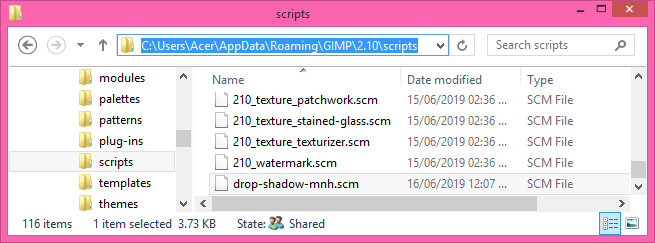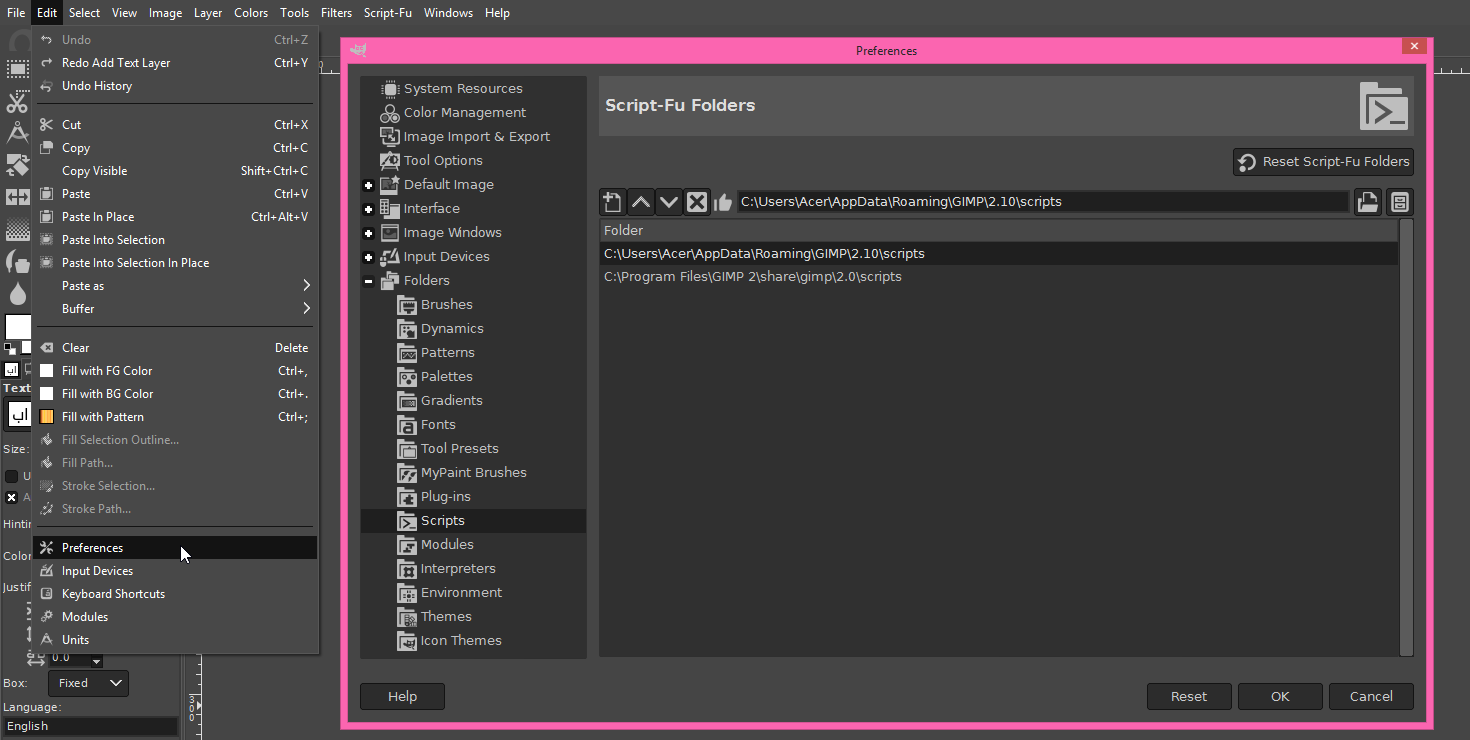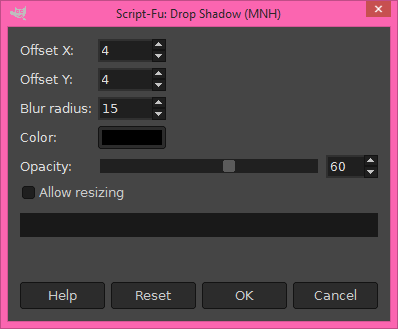This is just a collection of GIMP script-fus that I've initially created for my personal use. All of them are just automation scripts which call functions from other scripts to do the job for me.
I highly suggested you to also use the script bundle by Paul Sherman which is available on his website www.gimphelp.org. He has a lot of very useful scripts that I personally used, and I only create custom script if it's not available in his bundle. He's still updating his bundles and he's preparing scripts for the upcoming version 3.0 of GIMP.
GIMP, short for The GNU Image Manipulation Program, is a free and open sourced cross-platform raster image editor released under the GNU GPLv3. It is usable for all kind of raster image editing, basically anything that you could manipulate with pixels can also be edited with GIMP.
You can download GIMP from its official website.
Script-fu is a dialect of Scheme (which by itself is one of three main dialects of Lisp). It is
one of the scripting languages available for GIMP, and it is the
only scripting language installed by default on GIMP. Script-fu
is the equivalent of "macros" elsewhere where it is used to
automate anything that needs to be done frequently or too
complicated to be done manually. While script-fu is also
considered as plug-in, it has its own directory scripts.
Other than Script-fu, you can also write plug-ins for GIMP in
the C, Python, or Perl programming languages. Most of the third
party plug-ins currently available are written in Python,
however. These go to the plug-ins directory.
To install the script, please place it in the user or system-wide
scripts folder/directory.
NOTE: Replace USERNAME with the operating system username that you're using.
System-wide: C:\Program Files\GIMP 2\share\gimp\2.0\scripts
User (2.8): C:\Users\USERNAME\.gimp-2.8\scripts
User (2.10): C:\Users\USERNAME\AppData\Roaming\GIMP\2.10\scripts
System-wide: C:\Program Files\GIMP 2\share\gimp\2.0\scripts
User (2.8): C:\Documents and Settings\USERNAME\.gimp-2.8\scripts
Version 2.10 and above no longer support Windows XP (as noted here).
System-wide depends on your Linux flavour, check here for more information.
System-wide (Ubuntu 32-bit): /usr/lib/gimp/2.0/scripts
System-wide (Ubuntu 64-bit): /usr/lib64/gimp/2.0/scripts
User (2.8): /home/USERNAME/.gimp-2.8/scripts
User (2.10): /home/USERNAME/.gimp-2.10/scripts
System-wide: /Applications/GIMP.app/Contents/Resources/share/gimp/2.0/scripts/
User (2.8): $HOME/Library/Application Support/GIMP/2.8/scripts/
User (2.10): $HOME/Library/Application Support/GIMP/2.10/scripts/
Please follow instructions provided by your OS. System-wide
scripts directory is usually located within the GIMP installation
directory, whereas user scripts directory is usually located
within the user's own home directory.
Alternately, you can look into the paths mentioned in GIMP's preferences menu for the exact path to the folder/directory.
Currently I have the following script here:
drop-shadow-mnh.scm (Drop Shadow (MNH)) is a script that calls the
drop-shadow function 4 times with different parameters.
It accepts positive value from the offset-x and offset-y setting, then it will call drop-shadow function with the same parameters except the offset-x and offset-y are edited as follow:
- Pass original values
- Pass negate of offset-x and original offset-y
- Pass original offset-x and negate of offset-y
- Pass negates of both offset-x and offset-y
Download it here.
These scripts are licensed under the GNU GPLv3 just like GIMP itself and like most of other scripts available for GIMP.



